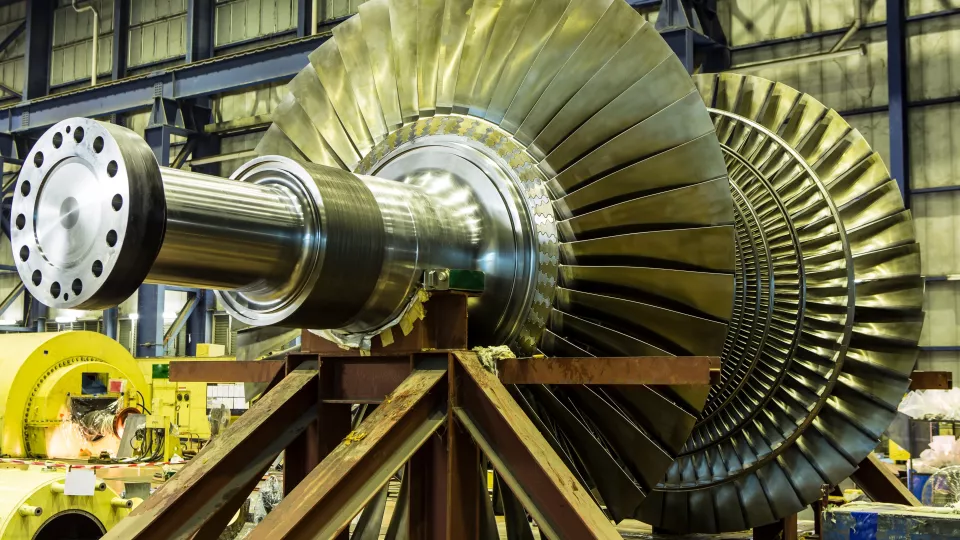Av Sven-E Lindberg
Henrik Persson is a machine technology engineer and doctoral student in industrial production at LTH, Lund University. For his degree project during his MSc in Engineering programme, he looked at the set of problems surrounding burr formation in different manufacturing processes such as cutting in milling, drilling and turning.
The right knowledge and technology is needed
For anyone who wants to understand what burrs are in this context, Henrik Persson uses an example from carpentry.
“Undesirable burr formation takes place when the drill goes in and out of a piece of wood. The burrs consist of sawdust that is finer at the entrance and coarser at the exit. My job is to try to identify and test which factors can reduce burr formation in different metal materials in different industrial manufacturing processes.”
Henrik Persson continues to explain:
“Burr formation may sound like a strange and somewhat insignificant area, however, the fact is each day there is a significant amount of shavings and waste from different manufacturing processes in Sweden due to burr formation – material losses that, to a great extent, could have been avoided with the correct knowledge and technology.”
Expensive and time-consuming
In addition, expensive and time-consuming processes are often required for deburring – that is, to remove the burrs. In the worst-case scenarios, a lack of knowledge of how burr formation affects the processed material can also lead to the development of ensuing problems such as a material suddenly splitting or deforming under certain conditions. Something that can have disastrous consequences if the material is placed in, for example, a turbine or aeroplane motor. Burrs are also the cause of many injuries in the form of employees cutting themselves when handling components in manufacturing.
“Unfortunately, burr formation is often viewed as an unavoidable and fundamentally unchangeable part of industrial processes”, says Henrik Persson. “However, the fact is that not only is it possible to reduce deburring waste and the expensive and time-consuming post-production of deburring, but it is also possible to identify and prevent the emergence of, for example, the problem-filled burrs which can lead to the complete destruction of a material.”
“With the right knowledge, benefits can be achieved through reduced use of materials and lower production costs, but also in the form of better quality, reduced impact on the environment and, in particular, a safer work environment with better controlled processes.”
Important for industry
Henrik Persson is therefore working on research in an area of great significance to the manufacturing industry. There are studies showing that, for a product or component, burr formation increases manufacturing costs by 13% on average. Despite this, the knowledge of burr formation and how it can be prevented or reduced is limited.
“Surprisingly little research has been conducted in the area and when I received a request from Jan-Eric Ståhl, professor at LTH, about whether I would like to base my degree project on burr formation it felt absolutely right. I was also encouraged by doctoral student, Volodymyr Bushlya, to take on the topic. I have worked in the industry myself and seen how much is discarded or post-processed every day due to components that lie outside the tolerance limits or because of material being destroyed.”
He continues:
“It is also a complex and challenging area. It sounds reasonably uncomplicated, however, the fact is there are around 35 different factors that can affect the cutting process and end result. It can be anything from the choice of material and manufacturing process to factors such as temperature, choice of coolants and how the machinery is installed. The more parameters you understand and control, the easier it is to control the process.”
Collaboration across borders
In order to identify and thoroughly understand the interaction between the different factors affecting the process and end result, a well-functioning collaboration between academia and industry is required – as well as an ongoing dialogue between researchers with different specialisations, explains Henrik Persson.
“It is an advantage to work at LTH at Lund University. We have a strong tradition in manufacturing economics and metal cutting with senior researchers and a well-established collaboration with industry with many senior researchers involved. This means expertise is available within most relevant areas when facing new issues and challenges – while we also have access to good instruments, something which will only improve with the new research facilities MAX IV and ESS.”
Dangerous burrs
In industry today, removal of burrs that have occurred due to manufacturing, for example, of automotive components so the end product looks good and functions as it should, is generally skilful. However, how burrs can be prevented or reduced is something that could be improved.
“Some burrs cannot be avoided but if deburring is not done correctly there is great risk that the material or component will not function as it should. This could be due to changed material properties or quite simply that the burrs were not successfully removed”, explains Henrik Persson, lifting up a turned piece of high-purity copper with clearly deformed burr formation.
High-purity copper, which among other things is used at research facilities such as MAX IV, is known to be a ‘difficult’ material to work with and for this reason, it is important that it is handled correctly.
“It is important to know the point when the material, instead of forming shavings quickly deforms and forms burrs. This takes place extremely quickly and dramatically but it is possible to predict and prevent with the right knowledge and process. At the same time, it is important to have an understanding of the material’s properties after deburring – otherwise the risk is great that damage occurs at a later stage.”
Surprisingly little research has been done in the area.
Optimisation of the process
Ultimately, it is important to know the materials, to have an awareness of how they react in different kinds of processes and under different conditions and, based on this knowledge, optimise the manufacturing based on needs and requirement specifications.
“It might be about which process to use, which tool works best, what rotation speed is preferable, the rotation direction and feed that should be used and so on. The more factors you can control, the better the likelihood of achieving a good process and a material with the properties you are looking for.”
Great potential
During his ten years at LTH, Henrik Persson has had time to study burr formation from many different points of view. He is currently conducting his own research while teaching future engineers about the importance of understanding burrs in industrial production.
“There are so many exciting developments taking place in this area, both in research and industry, where we have to have a good understanding of the material.”
However, there are still no international standards for the different types of cutting and burr formation and there is great need for a collective database for industry and the research community, Henrik Persson points out.
“I do not dare guess what the problems related to burr formation cost economically or environmentally today. By collecting and disseminating knowledge on how we can optimise these kinds of industrial processes, there are enormous benefits to be achieved, both economic and environmental.”

